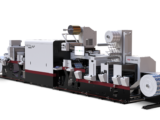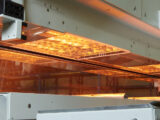100% defect detection: Multiview functions ensure full-coverage inspections for flexible packaging solutions
February 4, 2021When handling flexible packaging, brands and quality-conscious consumers expect consistently high quality. Even in the event of the smallest deviations and errors, manufacturers can expect to receive a complaint. These high standards can only be reliably met by using state-of-the-art web inspection systems. To achieve even better results, the 100% inline inspection system PrintSTAR offers a range of innovative multiview functions in which several banks of cameras cover multiple inspection functions at once. Thanks to its superior technology, the system even detects initially invisible production errors such as hazing and cold seal defects. Moreover, its precise error detection tools only report relevant defects. All in all, the enhanced inspection solution significantly reduces material consumption and waste while ensuring high-yield production with maximum process reliability.
The human eye performs marvels every day, but some tasks in print inspection are just beyond its capabilities. Cold seal defects, for instance, usually only become visible when it is already too late. However, reliable defect detection, often on highly reflective surfaces, is a real challenge even for optical inspection systems. On top of this, they have the complex task of detecting registration errors on non-transparent foils. For this reason, register marks are still being used to align cold seal patterns during the printing process.
Now, however, the innovation leader ISRA has developed an application devised specifically for detecting cold seal defects for its proven 100% inline inspection system PrintSTAR, which effectively and permanently improves process reliability.
Two-sided foil inspection detects cold seal defects
Using high-resolution LCD cameras combined with ultrabright LED lighting, the cold seal application detects both individual and recurrent cold seal defects, such as contamination, in real-time. On top of this, it checks the registration accuracy on the front and back of the substrate. To do so, it deploys a truly unique technical method: The inspection is performed simultaneously by both channels with a superimposed image. If the sealing layer on the back does not precisely match the printed image on the front, an acoustic signal alerts the operator immediately.
An additional benefit of the groundbreaking inspection
is that registration marks – which slow down the process – can be entirely
omitted, thereby reducing the required foil width and saving material costs.

